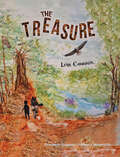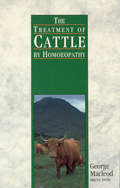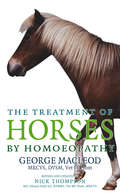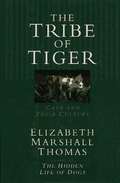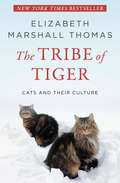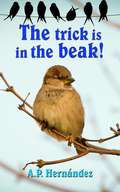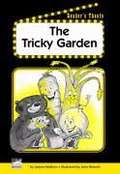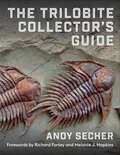- Table View
- List View
The Travelers and the Bear (Into Reading, Level N #68)
by Lynne Benton Olga Ivanov AlekseyNIMAC-sourced textbook
The Travelling Cat Chronicles
by Philip Gabriel Hiro ArikawaA life-affirming anthem to kindness and self-sacrifice, The Travelling Cat Chronicles shows how the smallest things can provide the greatest joy.We take journeys to explore exotic new places and to return to the comforts of home, to visit old acquaintances and to make new friends. But the most important journey is the one that shows us how to follow our hearts . . . An instant international bestseller, The Travelling Cat Chronicles has charmed readers around the world. With simple yet descriptive prose, this novel gives voice to Nana the cat and his owner, Satoru, as they take to the road on a journey with no other purpose than to visit three of Satoru's longtime friends. Or so Nana is led to believe . . . With his crooked tail--a sign of good fortune--and adventurous spirit, Nana is the perfect companion for the man who took him in as a stray. And as they travel in a silver van across Japan, with its ever-changing scenery and seasons, they will learn the true meaning of courage and gratitude, of loyalty and love.
The Travelling Cat Chronicles
by Philip Gabriel Hiro ArikawaWe take journeys to explore exotic new places and to return to the comforts of home, to visit old acquaintances and to make new friends. But the most important journey is the one that shows us how to follow our hearts...An instant and international bestseller, The Travelling Cat Chronicles has charmed readers around the world. With simple yet descriptive prose, this novel gives voice to Nana the cat and his owner, Satoru, as they take to the road on a journey with no other purpose than to visit three of Satoru's longtime friends. Or so Nana is led to believe... With his crooked tail--a sign of good fortune--and adventurous spirit, Nana is the perfect companion for the man who took him in as a stray. As they travel in a silver van across Japan, with its ever-changing scenery and seasons, they will learn the true meaning of courage and gratitude, of loyalty and love.
The Travelling Vet: From Pets to Pandas, My Life in Animals
by Jonathan CranstonJonathan Cranston is no ordinary vet. In addition to his day job in the Gloucestershire countryside treating cows, dogs, pigs and cats, he's also worked with an astonishing range of species around the world, including crocodiles, rhinos and pandas. In this charming collection he introduces us to some of his favourite patients, ranging from beloved family pets through to magnificent creatures of the wild.Whether microchipping armadillos, anaesthetising giraffes or birthing a calf, Jonathan's love for his work and the entire animal kingdom is infectious. From the preposterous (castrating a sugar glider) to the poignant (encountering victims of rhino poaching), the stories in The Travelling Vet will delight and enthral every animal lover.
The Treasure
by Lynn CarrikerChild is in search of a treasure and sets out on their own to find it. Child does not know what the treasure looks like, nor do they know where to find it. Child goes into the forest to search for the treasure and enlists the help of many animals that live there. Each animal assists Child by offering their own special wisdom and support. It is not until Child meets Brother Wolf that they are led to the discovery of a treasure so surprising and amazing that they can hardly believe it… for it is a treasure that can change the whole world.Come and travel with Child to find this treasure. You will be surprised and amazed too.
The Treasure Bird
by Peni R. GriffinWith clues from a talking parrot, ten-year-old Jessy and her stepbrother Matt discover the whereabouts of a hidden treasure in Uncle Matthew's old house in Texas.
The Treasure of Easter Island (Geronimo Stilton #60)
by Geronimo StiltonEach Geronimo Stilton book is fast-paced, with lively full-color art and a unique format kids 7-10 will love.Holey cheese -- my sister, Thea, was in danger! She had traveled to Easter Island in search of a secret treasure, and now she needed my help. There was no time to lose! My friends and I hopped on a plane to begin our search, aided by a map and a mysterious riddle. What an exciting adventure!
The Treasure of Topo-El-Bampo
by Scott O'DellTwo burros sold to the slave-driving owners of the silver mine eventually return to save their village from starvation.
The Treasure of the Sea (Thea Stilton: Special Edition #5)
by Thea StiltonFairies, folklore, and magical creatures await Thea Stilton and the Thea Sisters in every Special Edition adventure! Thea Stilton and the Thea Sisters are needed to help another magical land. The music of the sea has disappeared from the depths of the enchanted Land of the Ocean! If it doesn't return soon, the kingdom will perish. The mouselets and their friend Will Mystery travel to the underwater realm to search for the magical music. On their way, they swim through dangerous waters, reveal an ancient mystery, and encounter many hidden, fantastical creatures - some friendlier than others. It's an aquatic adventure!
The Treatment Of Cattle By Homoeopathy
by George MacleodMany farmers today are concerned, not only with the increasing cost of conventional drugs, but also with their side-effects and the build-up of resistant strains of bacteria due to the continued and often indiscriminate use of antibiotics.While this book will appeal to the already converted it is hoped that the unprejudiced newcomer will be sufficiently encouraged to investigate this system of medicine and enjoy its undoubted benefits.The aim of the homeopathic approach is to build up the health of the herd and increase the resistance of its individual members to disease, and, in consequence to increase the milk output and quality.Homeopathic remedies are all derived from natural sources and George Macleod outlines the homeopathic approach to the commoner diseases of cattle, omitting only serious injuries and others which are not economic to treat.
The Treatment Of Horses By Homoeopathy
by George MacleodThis book is for anyone who is interested in the welfare of horses, and who wishes to know more about treating them with homoeopathic remedies. Increasing numbers of horse owners and handlers today confirm that homoeopathy is a speedy and effective treatment, which can often deal with so-called 'incurable' ailments. As this fascinating guide explains, homoeopathic remedies are absolutely safe, easy to administer and have no side effects. This authoritative book includes advice on treating horses homoeopathically for both specific diseases and common ailments.
The Tree In The Ancient Forest
by Carol Reed-Jones Christopher CanyonAncient trees embrace a wonderful world of creatures, each playing their special role. From lowly fungi to majestic owls, the book connects the web of nature and aptly portrays the amazing ways in which the inhabitants of the forest depend upon one another for survival. Stunning illustrations by the renowned illustrator, Christopher Canyon, manage to be both magical and true. As AAAS Science Books & Films says, "The science is accurate and the book painlessly teaches important ecological lessons. "
The Tree of Life: Solving Science's Greatest Puzzle
by Max Telford'A DELIGHT' HENRY GEE'BEAUTIFUL' THOMAS HALLIDAYWhere do we come from and how did we get here?Come time-travelling through the history of every species that has ever lived with Professor Max Telford.A four-billion-year journey through the evolution of our planet, The Tree of Life tells the fascinating story of the gigantic family tree that records the relationships between every living thing - from humans, fish and butterflies to oak trees, mushrooms and even bacteria.Understanding how the amazing diversity of life on earth came to be is one of the greatest puzzles in biology. And this book, full of vivid and fascinating stories, takes you right inside: learn why grey wolves are more closely related to whales than to Tasmanian wolves; how geological change and environmental catastrophe left their marks on the genome; why we don't have tails but we are the only species with chins; and follow individual scientists down winding evolutionary byways and occasional dead ends in their attempts to solve this greatest of all puzzles. Along the way, we'll see how, far from being a dry representation of the dead, the tree of life is a living thing which constantly alters our perspective on the past, present and future of life on earth.From Darwin's early sketches to the vast computer generated diagrams scientists are building today, The Tree of Life explains how we can know our family tree at all and tells the epic history of the various ways it's possible to be a living thing. This is our own very personal story that began with the tiny ancestor of all life billions of years ago and ends with you and me.
The Tree of Life: Solving Science's Greatest Puzzle
by Max Telford'A DELIGHT' HENRY GEE'BEAUTIFUL' THOMAS HALLIDAYWhere do we come from and how did we get here?Come time-travelling through the history of every species that has ever lived with Professor Max Telford.A four-billion-year journey through the evolution of our planet, The Tree of Life tells the fascinating story of the gigantic family tree that records the relationships between every living thing - from humans, fish and butterflies to oak trees, mushrooms and even bacteria.Understanding how the amazing diversity of life on earth came to be is one of the greatest puzzles in biology. And this book, full of vivid and fascinating stories, takes you right inside: learn why grey wolves are more closely related to whales than to Tasmanian wolves; how geological change and environmental catastrophe left their marks on the genome; why we don't have tails but we are the only species with chins; and follow individual scientists down winding evolutionary byways and occasional dead ends in their attempts to solve this greatest of all puzzles. Along the way, we'll see how, far from being a dry representation of the dead, the tree of life is a living thing which constantly alters our perspective on the past, present and future of life on earth.From Darwin's early sketches to the vast computer generated diagrams scientists are building today, The Tree of Life explains how we can know our family tree at all and tells the epic history of the various ways it's possible to be a living thing. This is our own very personal story that began with the tiny ancestor of all life billions of years ago and ends with you and me.
The Trench
by Steve Alten"Its appetite is ravenous. Its teeth scalpel-sharp. Its power unstoppable as it smashes the steel doors holding it in a Monterey Aquarium. For the first time, the captive twenty-ton Megalodon shark has tasted human blood, and it wants more." "On the other side of the world, in the silent depths of the ocean, lies the Mariana Trench, where the Megalodon has spawned since the dawn of time. Paleo-biologist Jonas Taylor once dared to enter this perilous cavern. And he wears the painful scars of that deadly encounter. Now, as the body count rises and the horror of a monster's attack grips the California coast, Jonas must begin the hunt again."--BOOK JACKET. Title Summary field provided by Blackwell North America, Inc. All Rights Reserved
The Trial: A Folktale from Tibet (Fountas & Pinnell LLI Red #Level P)
by Susan BlackabyTHE QUARREL. A rock and a donkey on trial! How did that happen? Come to the king's court and find out.
The Tribe of Tiger: Cats and Their Culture
by Elizabeth Marshall ThomasTalks about the cultures of lions, tigers and housecats, among other big and small cats.
The Tribe of Tiger: Cats and Their Culture
by Elizabeth Marshall ThomasFrom the majestic Bengal tiger to the domesticated Siamese comes a meditation on cats from the bestselling author of The Hidden Life of Dogs and The Social Lives of Dogs From as far back in time as the disappearance of the dinosaurs, cats have occupied an important place in our evolutionary, social, and cultural history. The family of the cat is as diverse as it is widespread, ranging from the lions, tigers, and pumas of the African and Asian wilds to the domesticated cats of our homes, zoos, and circuses. When she witnesses her housecat, Rajah, effortlessly scare off two fully-grown deer, acclaimed anthropologist Elizabeth Marshall Thomas starts studying the links that bind the feline family together. Immersing herself in the subtle differences of their social orders, feeding behaviors, and means of communication, Thomas explores the nature of the cat, both wild and domestic, and the resilient streak that has ensured its survival over thousands of years.
The Trick Is in the Beak
by A. HernándezAlberto is a very peculiar sparrow. He spends hours cleaning and fluffing his feathers every day until he is shiny. Alberto thinks it is extremely important to always look perfect. His fame is so big that birds from all kinds and from everywhere around the world go to his sequoia school to attend his cleaning lessons. But something disturbs their peace and quiet. One morning, Alberto discovers he had been victim of a terrible robbery... A FUNNY BOOK FOR CHILDREN, AND AN EDUCATIVE RESOURCE FOR PARENTS, TEACHERS, AND PEDAGOGUES SO THEY CAN WORK ON CHILDREN'S SELF-ESTEEM. THIS BOOK ALSO TEACHES ABOUT VALUES SUCH AS FRIENDSHIP AND ALTRUISM.
The Trilobite Collector's Guide
by Andy SecherFor more than 250 million years, the primeval oceans of the Paleozoic teemed with trilobites. These hardy invertebrates evolved into an astonishing array of separate species—more than 25,000 at last count—and much remains unknown about these once-ubiquitous creatures. Fossil enthusiasts are captivated by trilobites’ diversity and adaptability, enthralled by the possibility of catching a glimpse of a transcendently strange past.Andy Secher—one of the most prolific trilobite collectors in the world—takes readers on an entertaining and enlightening journey to the distant epoch when these ancient arthropods swarmed through the seas. The Trilobite Collector’s Guide presents a series of “Top Ten” lists covering everything from celebrated Cambrian localities and world-class fossil shows to invaluable collecting tips and ways to spot a fake trilobite. These brisk and often witty chapters enumerate trilobites in all their beauty and strangeness, from the most common to the ridiculously rare, the outrageously old to the last in line. The Trilobite Collector’s Guide showcases more than 350 full-color photographs, mostly of stunning specimens from Secher’s personal collection, that put trilobites’ staggering variety and complexity on full display. Engaging and informative, this book lets readers see the world of trilobites as it’s never been seen before.
The Trip (Fountas & Pinnell Classroom, Guided Reading)
by Anne PhillipsNIMAC-sourced textbook. What a Trip! Where is Monkey going?
The Trip to Panama
by Anthea Bell JanoschFrom the Book Jacket: Little Bear and Little Tiger live together in their house down by the river. They are quite content with their life until one day Little Bear finds a crate marked PANAMA floating in the river. The crate smells strongly of bananas and Little Bear takes it home in great excitement to show Little Tiger. Panama suddenly becomes their dreamland and they will not be content until they have been there. This amusing fable, in Janosch's inimitable style and with his enchanting illustrations, is sure to be a winner with children and parents alike.
The Triumph of Henry Cecil: The Authorised Biography
by Tony RushmerDr Tony Ryan Award finalist, 2019'A wonderfully insightful, detailed and emotional biography of the legendary trainer's later years' Racing Post'[Cecil's] is a remarkable story and it has now been told with compassion, love, honesty and wonderful insight by Tony Rushmer' David Walsh, Sunday TimesWith a foreword by John GosdenWhen Henry Cecil sent out just 12 winners in 2005 it seemed as if the 10-time champion racehorse trainer's career was in terminal decline. The masterly touch that he'd shown through the glory-days of the two previous decades appeared to have deserted him after a series of painful professional and personal blows, including the death of his twin brother David. When Cecil was diagnosed with cancer in June 2006, it would have been enough to break many a man. But behind the scenes, the master of Warren Place in Newmarket was determined not to be labelled - in his words - a 'has-been'. Showing an iron resolve to fight for his professional reputation as well as his life, Cecil staged one of the great sporting comebacks. It was a story that captured the imagination of the racing public and beyond, peaking with his supreme handling of the unbeaten champion Frankel. Cecil's astonishing revival was witnessed in close-up by Tony Rushmer. The sports journalist became a trusted stable insider after being engaged in spring 2006 to help with the trainer's website and PR. He would remain part of the team right up until Cecil died in June 2013. Rushmer's unique access over seven years - in which he saw Cecil at the best and worst of times - allows him to provide a fresh perspective on an incredible part of the trainer's career. He is helped by many of those who were closest to the story, having interviewed numerous people during his extensive research. Containing fascinating detail and a wealth of new material, The Triumph of Henry Cecil shows how Cecil emerged from his slump, displayed relentless strength in the face of a cruel disease and trained the magnificent Frankel - as brilliant a racehorse as the sport has ever known.




